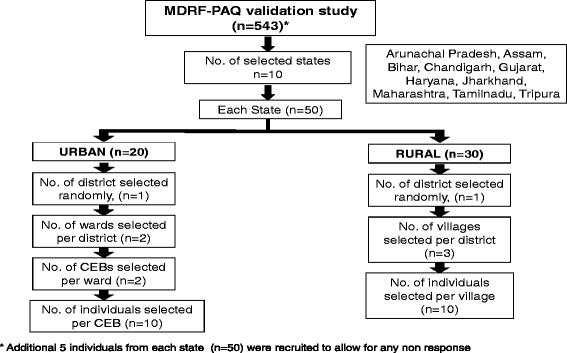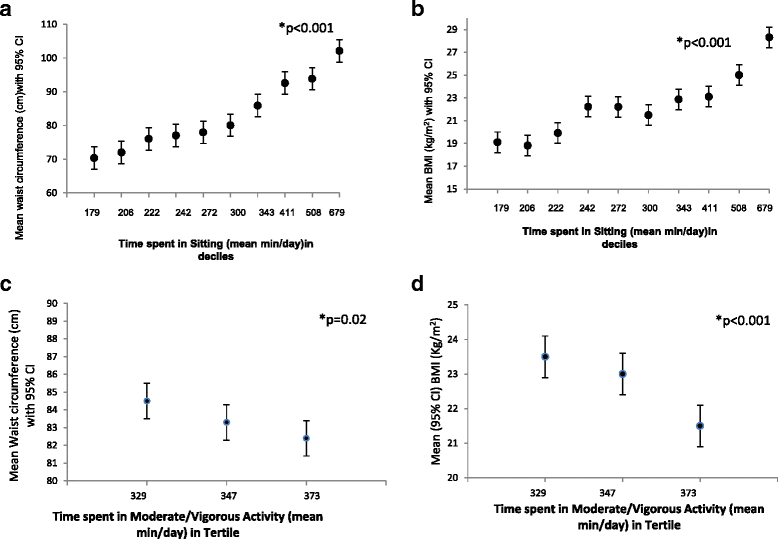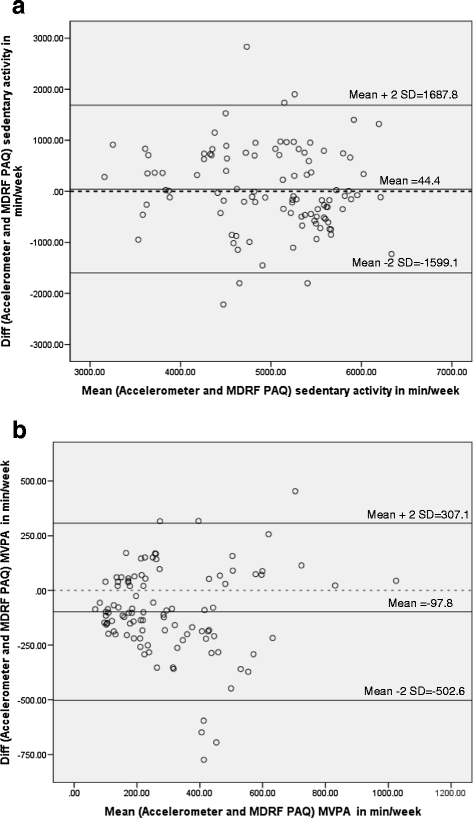Reliability and validity of a new physical activity questionnaire for India
- PMID: 26021320
- PMCID: PMC4498505
- DOI: 10.1186/s12966-015-0196-2
Reliability and validity of a new physical activity questionnaire for India
Abstract
Background: Measurement of physical activity in epidemiological studies requires tools which are reliable, valid and culturally relevant. We attempted to develop a physical activity questionnaire (PAQ) that would measure physical activity in various domains over a year and which would be valid for use in adults of different age groups with varying levels of activity in urban and rural settings in low and middle income countries like India. The present paper aims to assess the reliability and validity of this new PAQ- termed the Madras Diabetes Research Foundation- Physical Activity Questionnaire (MPAQ).
Methods: The MPAQ was administered by trained interviewers to 543 individuals of either gender aged 20 years and above from urban and rural areas in 10 states of India from May to August 2011, followed by a repeat administration within a month for assessing reliability. Relative validity was performed against the Global Physical Activity Questionnaire (GPAQ). Construct validity was tested by plotting time spent in sitting and moderate and vigorous physical activity (MVPA) against body-mass index (BMI) and waist circumference. Criterion validity was assessed using the triaxial accelerometer, in a separate subset of 103 individuals. Bland and Altman plots were used to assess the agreement between MPAQ and accelerometer.
Results: The interclass correlation coefficients (ICC) for total energy expenditure and physical activity levels were 0.82 and 0.73 respectively, between baseline and 1st month. The ICC between GPAQ and the MPAQ was 0.40 overall. The construct validity of the MPAQ showed linear association between sitting and MVPA, and BMI and waist circumference independent of age and gender. The Spearman's correlation coefficients for sedentary activity, MVPA and overall PA for MPAQ against the accelerometer were 0.48 (95%CI-0.32-0.62), 0.44 (0.27-0.59) and 0.46 (0.29-0.60) respectively. Bland and Altman plots showed good agreement between MPAQ and accelerometer for sedentary behavior and fair agreement for MVPA.
Conclusion: The MPAQ is an acceptable, reproducible and valid instrument, which captures data from multiple activity domains over the period of a year from adults of both genders and varying ages in various walks of life residing in urban and rural India.
Figures



References
-
- World Health Organisation. Chronic diseases and health promotion- global physical activity surveillance. Accessed at http://www.who.int/chp/steps/GPAQ/en/ on 06.05.2014.
-
- International Physical Activity Questionnaire. Accessed at http://www.ipaq.ki.se on 06.05.2014.
Publication types
MeSH terms
LinkOut - more resources
Full Text Sources
Other Literature Sources
Medical

